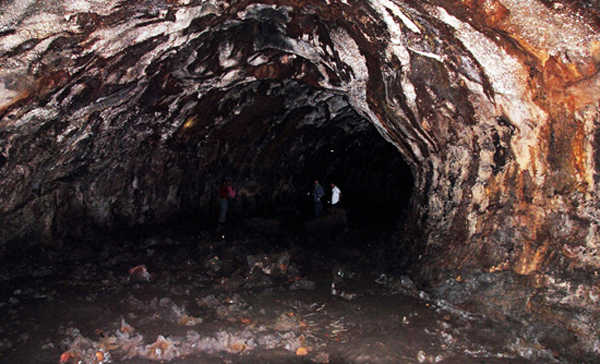HISTORY AND DEVELOPMENT OF DAKNONG
 |
Dak Nong is an ancient land, lying on M'Nong Highland to the Southwest of Central Highlands, at the end of Truong Son mountain chain. It has an average height from 600 to 700m, some place is up to 1.970m above sea level. Dak Nong was a place where ethnic minority groups have settled for a long time such as: M'Nong, Ma, EĐe..., under the regime of community, clans, tribes spreading over a vast area.
Geographically, Dak Nong in particular and Central Highlands in general lying on the three-way junction of the Indochinese countries always suffer from dispute of ouside forces with indigenous people or among invading forces. Therefore, this land always suffers from disorder in boundary of administrative geography.
From 1893, Nguyen dynasty was forced to accept being under the rule of French to the Central Highlands, Dak Nong became an area under the direct control of French colonialism.
Unyielding with the rule of colonialism, the ethnic minorities in Central Highlands as well as in Dak Nong rose up in arms to fight against the invading colonialists. Typically, N'Trang Guh's uprising (N'Trang Guh: 1845 - 1914, the chieftain of Cuah Kplang village), from 1887 to 1914, he had ever led insurgent army surrounding and wiping out Buon Tur post, Riang village, Dur village, Tinh village, Photy post....And N'Trang Long's uprising (1870 - 1935, he was from M'Nong ethnic group), he led the ethnic minorities M' Nong, Stieng, Ma...to fight against French at the end of 1911, the uprising spread throughout M' Nong Highland and at that time, there were many excellent chieftains who attended the revolution like R'Dinh, R'Ong (the chieftains of Bu Jeng Chet, Bu Mera, Bu Nor, Bu Nop village...belong to DakRtik, Dak Nong province nowadays). In the middle of May, 1935, the French troop concentrated on making an attack on the headquarter of insurgent army. Chieftain N' Trang Long got wounded and died at night of May 23rd 1935.
After the French colonialism completed the invasion and pacified Central Highlands, they had gradually set up the henchman administration of colonialists in Dak Nong province to control the people, mainly in Dak Mil, Dak Song. In 1940, beside Buon Ma Thuot prison, the French colonialism also built Dak Mil prison (Now it belongs to Dak Mil district, Dak Nong) to aim at imprisoning and torturing our revolutionary soldiers. Dak Mil prison became a revolutionary base of the district and witnessed many brave prison-break of patriot Communists.
During the anti-French resistance war ( 1945 - 1954) Dak Nong was a territory where the French temporarily occupied. The ethnic minorities M'Nong, Ma...with resilient, heroic tradition in struggles against foreign invaders early awoke to the revolutionary ideas and followed the revolution. In 1950, Dak Lak province appointed Mission Team 124 to carry out building revolutionary base around Nam Nung mountain.
1954 - 1959, during the early period of anti-American resistance war, many youth like M'Nong, Ma...awoke to the revolutionary ideas and were taken into training base to serve the local later. The Party's Steering Board with propaganda mission team called for establishing the M'Nong guerrilla platoons to fight against French. This was the precursor force of provincial military force later.
In 1959, Nam Nung became the base of revolutionary forces. At this place, revolutionary government constructed three guerrilla platoons including 150 M'Nong youth and mobilized tens of thousands of working days to serve the war. The government called for people to contribute thousands of tons of food for revolution and built thousands of tunnels, traps, tens of kilometers of fence to fight and protect the base, the leadership agency of province, districts.
In January 1959, Sai Gon government separated a western part of Dak Lak province and a part of Kiem Hoa district of Thu Dau Mot in order to establish Quang Duc province. The administrative frontier of Quang Duc province basically looked like the frontier of Dak Nong province nowadays. Quang Duc was divided into three districts: Duc Lap, Kien Duc, Khiem Duc and Duc Xuyen's administrative area. To be suitable with strategy mission requirement and war condition, in December 1960, the Central government decided to establish Quang Duc province basing on enemy's frontier division (codenamed B4), inter-province IV under the direct control of inter-region V. In the middle of 1961, Quang Duc province was directly steered by zone VI.
Early in the 1962, derving from the requirement, the mission of the Revolution, the Central gorvernment decided to disintegrate Quang Duc province. Duc Lap and Duc Xuyen district entered into Dak Lak province, Kien Duc district entered into Phuoc Long province, Khiem Duc district entered into Lam Dong province.
After the South of Vietnam was completely liberated, in May 1975, implementing the policy of the Central government, Quang Duc province was re-established, and the revolutionary gorvernment quickly directed the agencies, departments to stablize and restore production to stablize people's life and overcome the consequences of war, gradually developing socio - economic base. On November 1975, Quang Duc province was merged into Dak Lak province.
On January 1st 2004, Dak Nong province was re-established under the resolution N0 23/2003/QH11 - 26/11/2003 of Parliament on the base of the separation from Dak Lak province. Currently, Dak Nong province has natural area of 6.514,38 km2. It has 08 administrative units of district, town including: Cu Jut, Dak Mil, Krong No, Dak Song, Dak Lap, Dak Glong, Tuy Duc and Gia Nghia town, with a population of 492.027 people and 33 ethnic groups. Dak Nong provincial center is Gia Nghia town.
ABOUT DAKNONG
Weather Display
| Đắk Nông | |
| Pleiku | |
| TP Hồ Chí Minh | |